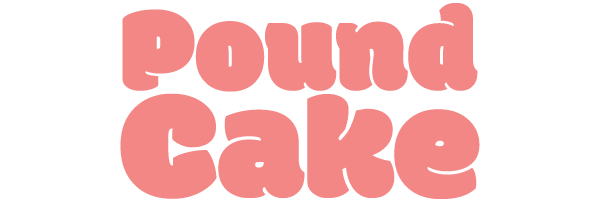The Ensemble Patterns Perkins shirt is my first autumn-facing sew! Which Perkins? Sue? Maybe! Sorry Sue, it’s mine though!

One of my weirder acquisitions from The Man Outside Sainsbury’s was this devastatingly cheap, semi-sheer windowpane fabric, which I thought was cotton until about two seconds after buying it. Then I realized it was definitely a mixture of petroleum and cotton candy (so fake! So fragile!). What, am I not gonna sew it though? NO.
Also did I mention I went to TMOS?! Professor Boyfriend and I had one unscheduled morning in London (we were there for three days, mostly to see his family) and luckily some of that family lived not too far from Walthamstow, so I was able to squeeze in fabric shopping. Sadly I didn’t make it to Ray Stitch as recommended by the outstandingly stylish Beck, or Liberty of London (I wanted Liberty bias tape!), but next time I hope!
This fabric was a pain to work with, but dare I say worth it? I like the windowpane, it’s light and flowy, but most importantly, I feel really proud of myself for handling it!

I made a batch of homemade spray starch, but it wasn’t a good fit for this synthetic. Pressed on cool, the starch didn’t stiffen; any hotter, and the starch left a toasty spot on my white fabric. I didn’t even try iron-on interfacing – all I could picture was melted, shriveled plastic.
Instead, I underlined both collar pieces, collar stand pieces, and plackets with scraps of cotton voile. I actually cut the pattern pieces from my voile, and then sewed them to my uncut main fabric within the seam allowance, before finally cutting the main fabric to match. Almost like block fusing! Fussy, but I don’t regret it!
I cut the inner sleeves, yoke, and pocket lining from scraps of white linen. They’re slightly different temperatures of white but I used up a lot of odds and ends. I also hemmed the shirt with voile bias tape. These scraps did triple-duty – they added a little much-needed structure, prevented the print from showing through on the sleeves, and concealed most of the seam allowances.
Cutting in general was a marathon! This fabric had a deeply held anti-staying-on-grain position, but the woven grid pattern helped me tug it more or less into shape. The MVP of cutting was actually the sheer nature of the fabric, since I could cut one piece, move it, and easily see, align, and pin the grid. Then, and I can’t repeat this enough for thin, malleable, shred-y fabric, STAY-STITCH EVERYTHING.
Actual sewing was not so bad! I was racing the clock on those 3/8ths seam allowances as the fabric tattered before my eyes, but except for some fabric dragging when I topstitched, a new sharp needle got the job done with only, OH YOU KNOW, constant stress (but then an equal and opposite satisfaction).

And then a lady in Trader Joe’s said she liked it so it was ALL WORTH IT!


Oh, here’s another thing about my shirt: at least one of these sleeves is sewn wrong. I rather suspect they both are. I know this seems like a mathematical impossibility but thanks to the linings, I can put in one fashion fabric correctly and one wrongly, and one lining correctly and one wrongly…on opposite arms! Booyah! None of my fabrics had a right side/wrong side and the fashion fabric shredded right down to my stay-stitching line, notches too; halfway through sewing the second sleeve I realized they weren’t symmetrical anymore but it’s anyone’s guess which piece ended up where!

It seems to not matter, somehow. Yes let’s agree it doesn’t matter! By the way, if the fabric requirements seem a little high for this shirt, it’s because of the sleeve linings. I didn’t realize the so-called ‘magic sleeves’ were lined until my first instruction booklet read-through. It briefly threw me for a loop but I love it, in fact. It doesn’t make the sleeves too heavy, and it seals everything up all pretty inside.
If you want to use a different fabric for the inner layer of the sleeve, yoke, and pocket, you can subtract ½ yard from the main fabric requirements, and buy an additional 2/3 of a yard of your lining choice. It takes slightly more because you can’t fit it in around the edges of other pieces, but you can choose something cheaper/lighter – or in a case like this, solid and opaque, to prevent print show-through.

The only seam that isn’t finished beautifully, if you follow the instructions, is the underarm/side seam. I opted to use narrow French seams as I figured this shirt could sacrifice an extra 1/8” per seam – the total ½” is not a meaningful absence by volume. Also, I recently learned French seams are called English seams in France, which is pretty delightful.

I think I can ju-uu-st about squeeze into this, despite making it ½” smaller around. :} I love my new shirt. I’m afraid to wash it in case it rips, dissolves, melts, or turns out to have been a dream all along. But don’t worry, Mom, I’m still gonna.
Finally, I’ll leave you with this bizarre gem, courtesy of Professor Boyfriend!

O_O
WOAH.
—
Pattern: Perkins shirt
Pattern cost: $12.00
Size: 8
Supplies: 2 meters of windowpane mystery fabric, $4.86, TMOS; 6 buttons, $3.00, Gather Here
Total time: 7.75 hours
Total cost: $19.86

That last photo is EVERYTHING. On a different note, do you find the length of your Perkins shirt difficult to combine? I love mine (also somewhat sheer and black-and-white) but I just don’t find many ways to wear it.
LikeLike
It took me a second to understand what I was seeing when he sent it to me! ^^ So far I’ve only been wearing mine with high-waisted skinny jeans; it doesn’t seem to work with wide pants or boyfriend jeans. Let me know if you find another combo (miniskirt, maybe?). : )
LikeLike